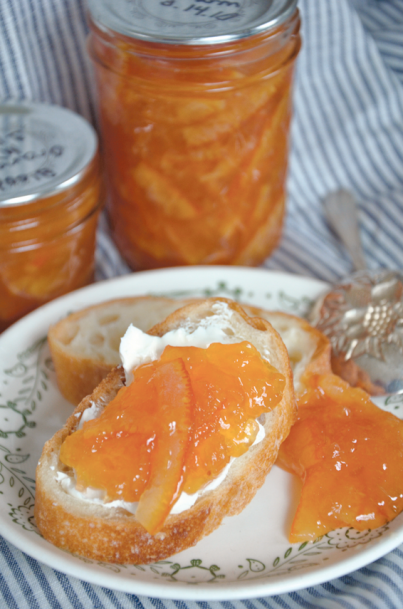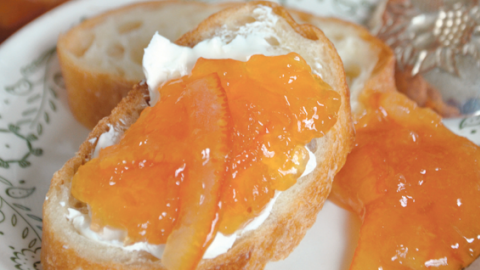LEARN: Jam Making 101
Gorgeous, fresh, sexy fruit–when the first waves of succulent gems start coming off the fields, trees and vines, it sets me into a bit of a frenzy. I ache at the thought of those luscious little tidbits slipping through my fingers until next season. So I squirrel them away by cooking them down into sweet, seductive jams that perfume my kitchen as they cook and fill my pantry with memories of local farms and sunny days.
Jam making is really all about pectin: the magical, naturally occurring compound that gives jelled spreads their unctuous texture. Some fruits, such as rhubarb and apricots, have very little of it and therefore benefit from a boost of packaged pectin to achieve the desired texture. These added-pectin spreads, also called quick jams, have a bright, fruit-forward flavor. Because the added pectin jells them instantly, they are very speedy to make. The strong jelling ability of added pectin also means that you can make sweet spreads out of unusual candidates for the jam pot: vegetables such as chilies are delicious and even liquids such as wine and herbal infusions taste fantastic given this treatment.
Long-cooking jams, also called classic jams, rely solely on the pectin available in the fruit. Most often they are reserved for high-pectin fruits such as tart apples, cranberries and citrus that, when combined with sugar and lemon juice and given sufficient time on the stove, jell quite nicely on their own. But I have made classic jams (albeit somewhat loosely set ones) out of low-pectin fruit, too. The long cooking process of classic jams gives the spread a rich, deep flavor and silky texture that is worth the wait.
Whether you are making quick or long-cooking jams, it is always best to use fresh fruit grown as close to your home as possible. Avoid overripe produce and "seconds." Such fruit will have lost much of its natural pectin with age and may carry a bacterial load that is too high for the process. Similarly, fruit that is shipped a great distance runs the risk of harboring an increased number of contaminants.
Making jam is a terrific way to preserve gorgeous, seasonal fruits. Source them from your regional farmers and you will be preserving local agriculture, too.






